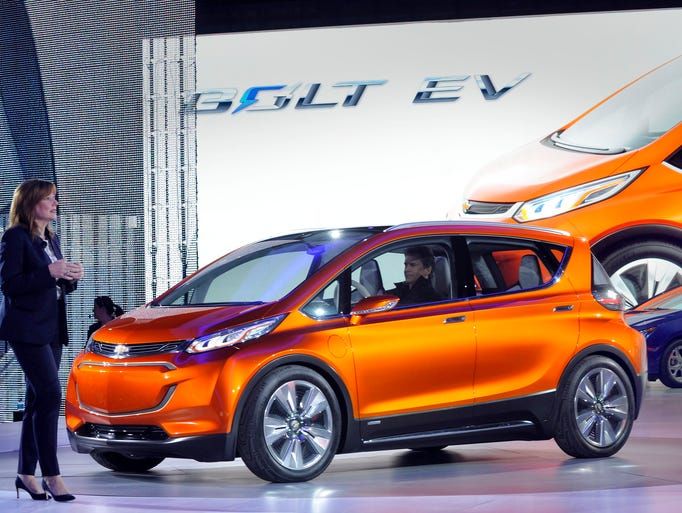
Let’s face it, car buying can be a real rollercoaster. You spend countless hours researching, dreaming, and finally, signing on the dotted line, only to sometimes discover that your shiny new (or new-to-you) ride is more of a headache than a dream machine. It’s a truly gut-wrenching feeling when buyer’s remorse sets in, especially after shelling out tens of thousands of dollars or committing to a multi-year loan. This disappointment happens all too often, transforming what should be an exciting purchase into a source of ongoing frustration.
With new and used car prices soaring these days, making an informed decision is absolutely critical. Relying solely on a car’s sleek exterior or impressive spec sheet can quickly lead you down a path of regret, where unexpected problems and costly repairs become the norm. Sometimes, the best way to navigate this tricky terrain is to learn from the experiences of other vehicle owners. So, buckle up! We’ve scoured feedback to bring you a candid look at cars that, despite initial appeal, have left motorists wishing they could hit the rewind button.
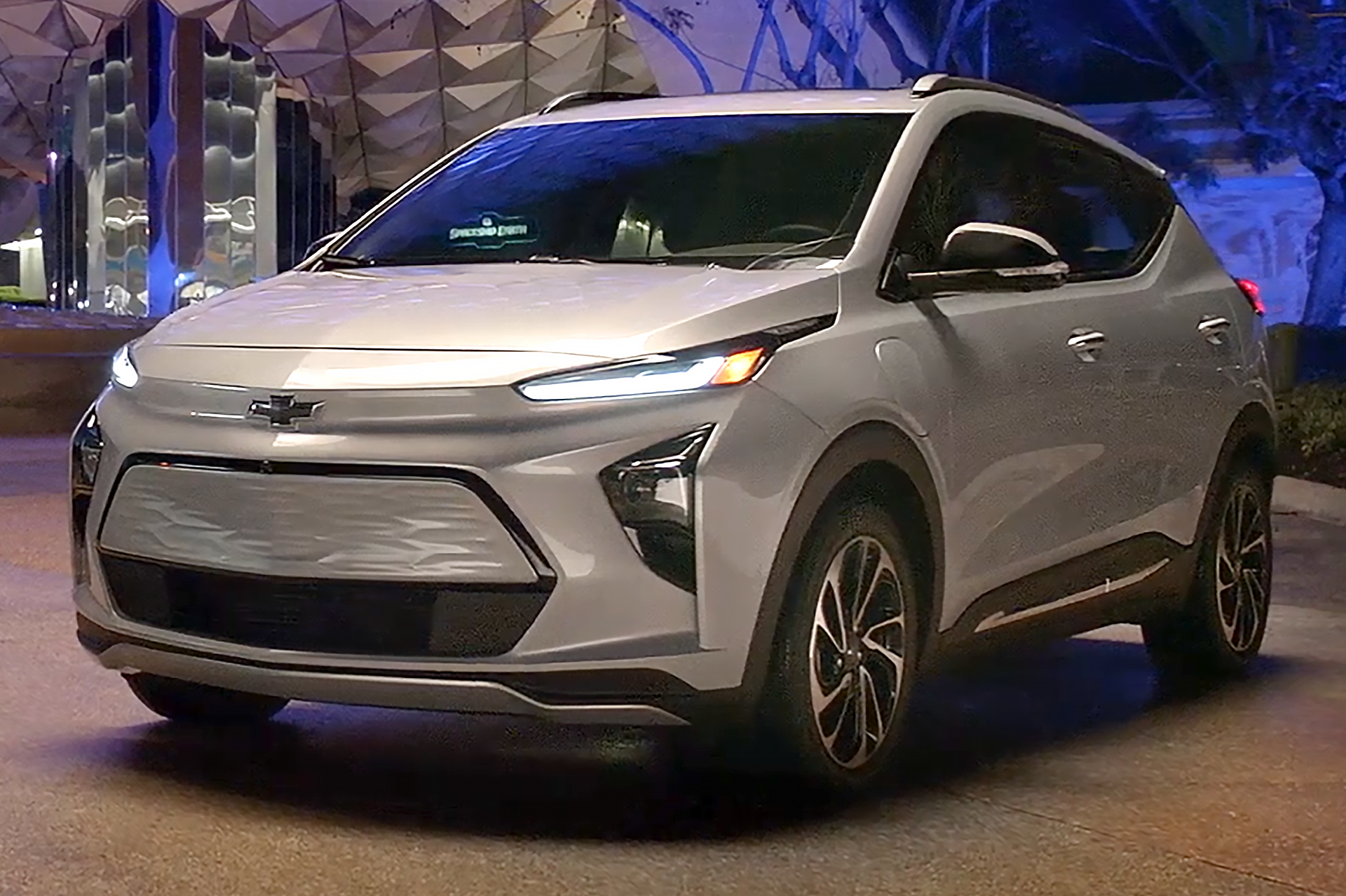
1. **Chevrolet Bolt**The Chevrolet Bolt initially received praise for its affordability and a respectable electric range, positioning it as an attractive entry point into the EV market. On the surface, it promised a practical and economical solution for daily commutes, offering a greener alternative that seemed within reach for many budget-conscious buyers. However, this initial optimism quickly gave way to widespread concern and deep regret among its owners.
The most infamous issue to plague the Bolt involved serious battery-related fires, leading to massive recalls in both 2020 and 2021. This severe safety problem stemmed from lithium-ion batteries manufactured by LG, which were found to have a defect that could cause them to short-circuit, overheat, and, in the worst cases, ignite into flames. Such a fundamental safety flaw understandably eroded consumer trust and caused significant distress for those who owned the vehicle.
Beyond the critical battery debacle, the Bolt also drew criticism for its overall driving experience. Owners frequently described the ride quality as merely “so-so,” lacking comfort and refinement. Furthermore, the space available for rear passengers and the vehicle’s general handling characteristics were also noted as being unremarkable. These factors, combined with the severe safety issues, cemented the Chevrolet Bolt’s reputation as a car many owners wished they had never purchased.
Car Model Information: 2019 Chevrolet Bolt EV LT
Name: Chevrolet Bolt EV
Caption: 2022 Chevrolet Bolt EV
Manufacturer: General Motors
Production: unbulleted list
ModelYears: unbulleted list
Class: Subcompact car
BodyStyle: hatchback
Layout: Front-engine, front-wheel-drive layout
Predecessor: Chevrolet Spark EV
Categories: 2020s cars, All Wikipedia articles in need of updating, All articles containing potentially dated statements, All articles with unsourced statements, Articles containing potentially dated statements from February 2018
Summary: The Chevrolet Bolt EV (marketed in Europe as Opel Ampera-e) is a battery electric subcompact hatchback manufactured and marketed by General Motors under its Chevrolet brand from late 2016 until late 2023, with a brief hiatus between mid-2021 and early 2022.
The first-generation Bolt was developed and manufactured with LG Corporation. Sales of the 2017 Bolt began in California in December 2016; it was released nationwide and international markets release in 2017. A rebadged European variant was marketed as the Opel Ampera-e in mainland Europe. In 2017, the Bolt was the second-best-selling plug-in car in the United States. It was named the 2017 Motor Trend Car of the Year, the 2017 North American Car of the Year, an Automobile magazine 2017 All Star, and was listed in Time magazine’s Best 25 Inventions of 2016. The Ampera-e was discontinued after 2018. By the end of 2020, GM had sold 112,000 Bolt and Ampera-e cars worldwide. The first-generation Bolt had been subject to at least three recalls due to battery fire risks.
In mid-2023, GM officials said they would discontinue the Bolt; after outcry, they announced plans for a next-generation model, which is expected to be revealed in 2025 for model year 2026.
Get more information about: Chevrolet Bolt
Buying a high-performing used car >>>
Brand: Chevrolet Model: Bolt
Price: $12,999 Mileage: 64,980 mi.
Read more about: 12 Cars That Made Drivers Say ‘Nope, Not Again!’ – Your Ultimate Guide to Avoiding Instant Regret on Wheels
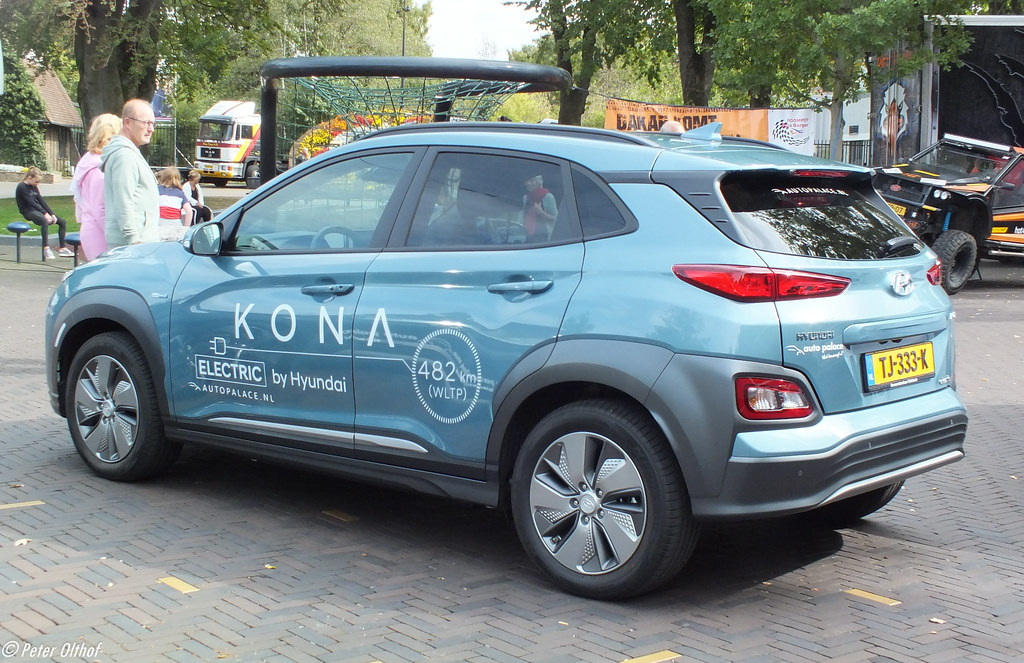
2. **Hyundai Kona Electric**Hyundai has earned a strong reputation for delivering innovative and well-received electric vehicles, positioning itself as a serious contender in the competitive EV landscape. Yet, even successful manufacturers can have their significant missteps, and the Hyundai Kona Electric unfortunately stands out as a “clunker” in an otherwise impressive lineup. Its journey has been far from smooth, leading to considerable buyer dissatisfaction.
Much like its Chevrolet counterpart, the Kona Electric has a troubled history marked by battery fires and subsequent recalls. Hyundai was compelled to issue a worldwide recall in both 2020 and 2021, specifically to address these fire risks by replacing faulty battery packs in affected vehicles. This massive undertaking, intended to “nip the fire risks in the bud,” undeniably highlighted a critical flaw at the core of the vehicle’s design and component sourcing.
While the battery issues were severe, the context strongly suggests they were “just the tip of the iceberg.” The stark warning, “Buyer beware!” indicates that a deeper well of dissatisfaction continued to plague owners beyond just the power source. This implies that even after battery replacements, other aspects of the Kona Electric ownership experience have continued to disappoint, leading many to wish they had steered clear of this particular EV.
Car Model Information: 2023 Honda Civic Sport
Name: Hyundai Kona
Caption: Hyundai Kona N Line (SX2)
Manufacturer: Hyundai Motor Company
Aka: Hyundai Kauai (Portugal)
Production: 2017–present
ModelYears: 2018–present
Class: Subcompact crossover SUV
BodyStyle: SUV
Layout: ubl
Categories: 2020s cars, All-wheel-drive vehicles, All Wikipedia articles in need of updating, Articles containing Chinese-language text, Articles containing Korean-language text
Summary: The Hyundai Kona (Korean: 현대 코나) is a subcompact crossover SUV produced by the South Korean manufacturer Hyundai. The first-generation Kona debuted in June 2017 and the production version was revealed later that year. It is positioned between the Venue or Bayon and the Tucson in Hyundai crossover SUV line-up. The battery electric version called the Kona Electric (or Kona EV) was first launched in South Korea during the first half of 2018 and rolled out gradually worldwide afterwards.
Get more information about: Hyundai Kona
Buying a high-performing used car >>>
Brand: Hyundai Model: Kona Electric
Price: $27,589 Mileage: 27,524 mi.
Read more about: 12 Cars That Made Drivers Say ‘Nope, Not Again!’ – Your Ultimate Guide to Avoiding Instant Regret on Wheels
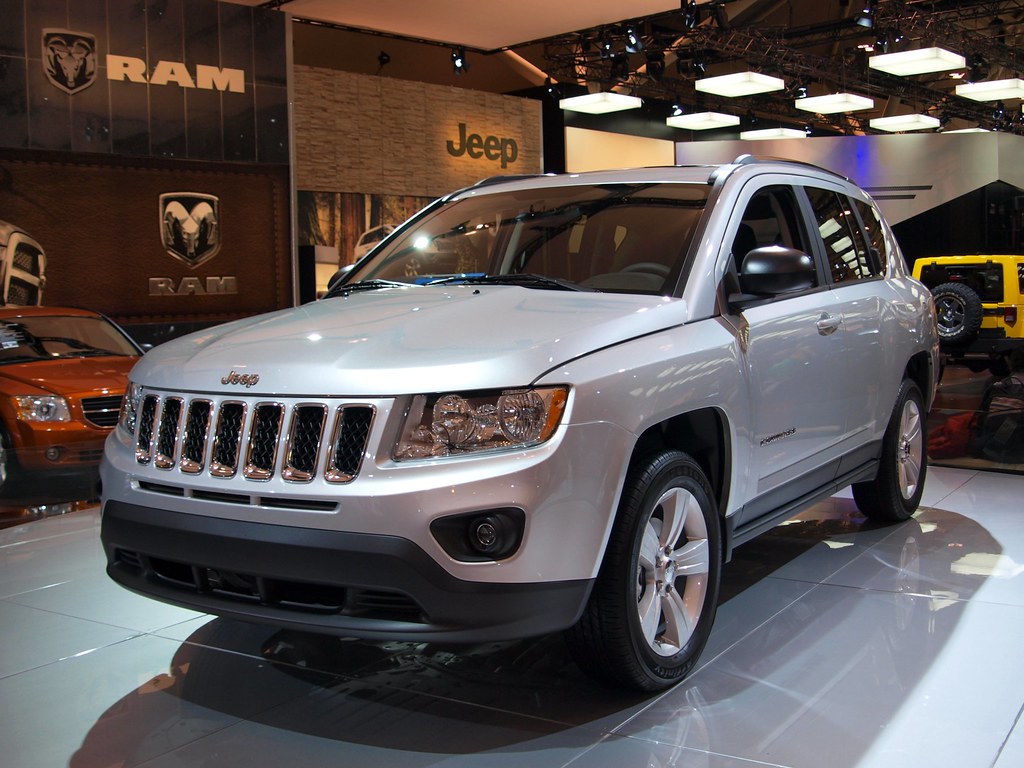
3. **Jeep Compass**The Jeep Compass, marketed as a compact SUV, might conjure images of rugged adventure, but for a considerable number of owners across various model years, it has proven to be “a migraine headache on wheels.” Far from delivering the expected durability and capability associated with the Jeep brand, this vehicle has instead been plagued by a litany of serious, frustrating, and often expensive issues, transforming ownership into a regrettable experience.
A primary source of frustration lay with its transmissions, specifically both the continuously variable transmission (CVT) and the 9-speed automatic versions. Owners consistently reported “herky-jerky shifting” that made for an uncomfortable and unpredictable ride. Worse still, many experienced “catastrophic failure,” leaving them stranded and facing significant repair costs for this crucial component.
Beyond the widespread transmission woes, the Compass also suffered from “poor engine performance,” often feeling underpowered and unresponsive. “Excessive oil consumption” and persistent “electrical system issues” further added to the maintenance burden. Older models were additionally criticized for “lower comfort than many other vehicles,” problems with the “driver seat,” “indicator visibility,” and notably, “so little horsepower” that some questioned its true Jeep identity.
Car Model Information: 2019 Jeep Wrangler Sport
Name: Jeep Compass
Caption: 2019 Jeep Compass
Manufacturer: Jeep
Production: 2006–present
ModelYears: 2007–present
Class: Compact crossover SUV
BodyStyle: SUV
Layout: Front-engine, front-wheel-drive layout
Chassis: Unibody
Categories: 2010s cars, 2020s cars, All-wheel-drive vehicles, All Wikipedia articles written in American English, Articles with short description
Summary: The Jeep Compass is a compact crossover SUV, introduced in 2006 for the 2007 model year. The first generation Compass and Patriot, its rebadged variant, were among Jeep’s first crossover SUVs. The second-generation Compass debuted in September 2016 in Brazil and at the Los Angeles International Auto Show in November 2016, sharing a modified platform with the Renegade. It is positioned between the smaller Renegade and the larger Cherokee globally or the Commander in South America. The third-generation Compass debuted in May 2025, built on the STLA Medium by Stellantis, shared with other PSA Groupe vehicles.
Get more information about: Jeep Compass
Buying a high-performing used car >>>
Brand: Jeep Model: Compass
Price: $19,977 Mileage: 68,026 mi.
Read more about: 12 Cars That Made Drivers Say ‘Nope, Not Again!’ – Your Ultimate Guide to Avoiding Instant Regret on Wheels
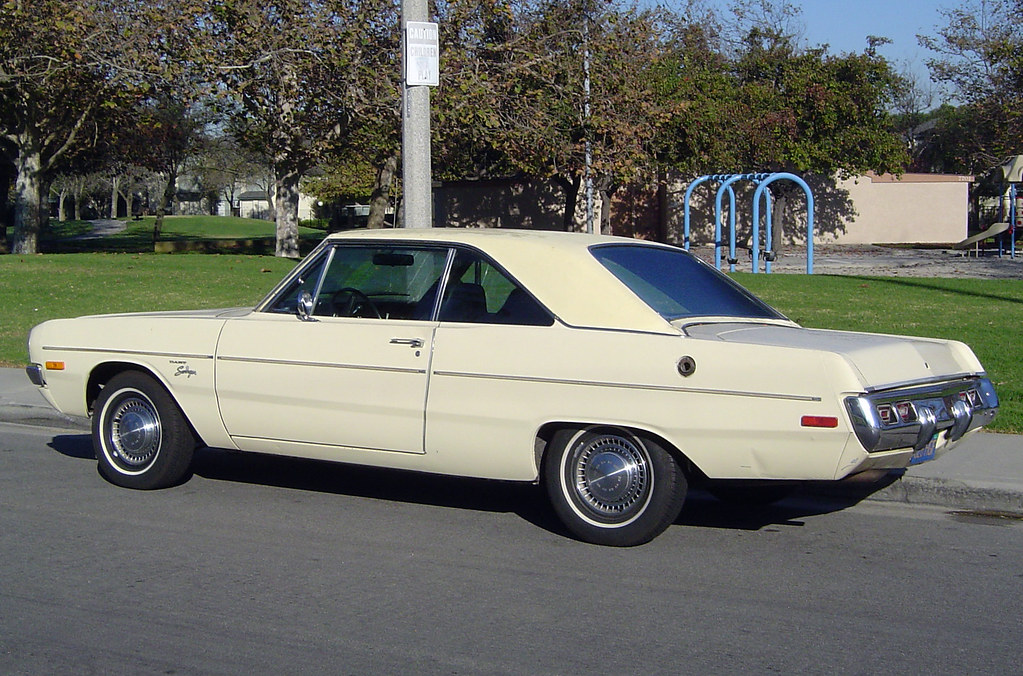
4. **Dodge Dart**The Dodge Dart, despite being a compact sedan, earned a notorious reputation for having “full-size car problems,” indicating a disproportionate number of severe issues for its class. For many who purchased it, the experience quickly devolved into profound regret, with a significant majority expressing deep dissatisfaction across various critical systems of the car. It became a prime example of a vehicle failing to live up to basic expectations.
The list of grievances for the Dodge Dart was extensive, impacting nearly every vital component. Problems were reported “from the transmission to the engine and from the suspension to the brakes,” indicating widespread unreliability. This cascade of shortcomings collectively diminished the driving experience, constantly reminding owners that their purchase was a costly mistake rather than a dependable asset.
Adding to the mechanical woes, Consumer Reports highlighted that “around six in 10 buyers say they are not satisfied with the vehicle,” a staggering figure that underscores the broad disappointment. Drivers also complained about “sluggish acceleration” and “difficulty in finding a comfortable seated position,” impacting daily comfort. Even basic amenities like a “poor AC system” proved to be a persistent annoyance, firmly cementing the Dodge Dart’s place on this list.
Car Model Information: 1972 Dodge Dart Swinger
Name: Dodge Dart
Caption: 1966 Dodge Dart GT 2-door hardtop
Manufacturer: Dodge
Production: 1959–1976 (US market)
ModelYears: 1960–1976 (US market)
Class: Full-size
Layout: FR layout
Predecessor: Dodge Coronet#Fourth generation (1957–1959)
Related: Plymouth Valiant,Chrysler Valiant,Dodge Phoenix
Successor: Dodge Aspen,Dodge Diplomat,Talbot Tagora
Categories: 1970s cars, All articles with unsourced statements, Articles with short description, Articles with unsourced statements from December 2023, Articles with unsourced statements from May 2025
Summary: The Dodge Dart is a line of passenger cars produced by Dodge from the 1959 to 1976 model years in North America, with production extended to later years in various other markets.
The production Dodge Dart was introduced as a lower-priced full-size model in 1960 and 1961, but became a mid-size car for one model year for 1962, and was then reduced to a compact for two generations, from 1963 to 1976.
Chrysler had first used ‘Dart’ name plates on two Italian styled show cars, in 1956 and 1957, before it became a Dodge model name. The Dart nameplate was resurrected for a Fiat-derived compact car that was introduced in 2012.
Get more information about: Dodge Dart
Buying a high-performing used car >>>
Brand: Dodge Model: Dart
Price: $18,250 Mileage: 40,424 mi.
Read more about: 12 Cars That Made Drivers Say ‘Nope, Not Again!’ – Your Ultimate Guide to Avoiding Instant Regret on Wheels

5. **Dodge Grand Caravan**The Dodge Grand Caravan holds a unique, if sometimes complicated, place in many families’ histories, often serving as the quintessential “family, pet, and thing hauler.” While these minivans may have created numerous memories, “some fond and some not,” the overwhelming sentiment among a large number of owners is one of deep regret. Despite its practical promise, the Grand Caravan was described as “anything but smooth driving” and frequently proved to be a significant source of frustration, particularly concerning its reliability.
The most common and critical complaint from owners centered squarely on “transmission failure.” This was not merely an isolated incident; it was a prevalent issue that severely undermined the reliability expected from a family vehicle that needs to be consistently dependable. Before the transmissions would eventually “go kaput,” they frequently exhibited a range of alarming symptoms, including “delayed gear engagement,” “rough shifting,” and “slipping,” making driving unpredictable and signaling expensive repairs ahead.
Beyond the fundamental transmission problems, owners also reported persistent “electrical system problems” and “heavy oil consumption,” significantly increasing the maintenance burden and overall cost of ownership. The interior quality also faced sharp criticism, with complaints about “cheap upholstery” that “doesn’t last even under mild wear and tear,” a “horrible sound system,” and “uncomfortable second-row seats.” These combined factors led many owners to state that “if they could rewind time and have a do-over, they would gladly choose something else,” making the Dodge Grand Caravan a prime example of buyer’s remorse.
Car Model Information: 2023 Honda Civic Sport
Caption: 2011 Dodge Grand Caravan Mainstreet
Name: Dodge Grand Caravan
Manufacturer: Chrysler Corporation,Daimler AG,Chrysler LLC,Chrysler Group LLC,FCA US LLC
Class: Minivan
Layout: FF layout,F4 layout
Production: November 2, 1983 –August 21, 2020
ModelYears: 1984–2020
Related: Plymouth Voyager,Chrysler Town & Country (minivan),Dodge Mini Ram,Chrysler Voyager,Volkswagen Routan
Assembly: Windsor, Ontario,Fenton, Missouri,Fenton, Missouri,Fuzhou
Successor: Dodge Journey,Chrysler Voyager
Categories: All-wheel-drive vehicles, All articles with unsourced statements, Articles with short description, Articles with unsourced statements from December 2017, Articles with unsourced statements from May 2009
Summary: The Dodge Caravan is a series of minivans manufactured by Chrysler from the 1984 through 2020 model years. The Dodge version of the Chrysler minivans, was marketed as both a passenger van and a cargo van (the only version of the model line offered in the latter configuration). For 1987, the model line was joined by the long-wheelbase Dodge Grand Caravan. Produced in five generations across 36 model years, the Dodge Caravan is the second longest-lived Dodge nameplate (exceeded only by the Dodge Charger). Initially marketed as the Dodge counterpart of the Plymouth Voyager, the Caravan was later slotted between the Voyager and the Chrysler Town & Country. Following the demise of Plymouth, the model line became the lowest-price Chrysler minivan, ultimately slotted below the Chrysler Pacifica.
Sold primarily in the United States and Canada, the Dodge Caravan was also marketed in Europe and other international markets under the Chrysler brand (as the Chrysler Voyager or Chrysler Caravan). From 2008 onward, Dodge marketed the model line only as the Grand Caravan; Ram Trucks sold a cargo-only version of the model line as the Ram C/V Tradesman. The model line was also rebranded as the Volkswagen Routan from 2009 through 2014.
After the 2020 model year, the Dodge Grand Caravan was discontinued, ending production on August 21, 2020. For 2021 production, the Grand Caravan nameplate was moved to Chrysler, which used it for a Canadian-market version of the Chrysler Pacifica (in the United States, the exact vehicle was marketed as the Chrysler Voyager).
For its entire production run, the Dodge Caravan/Grand Caravan was manufactured by Chrysler Canada (now Stellantis Canada) at its Windsor Assembly facility (Windsor, Ontario). From 1987 until 2007, the model line was also manufactured by Chrysler at its Saint Louis Assembly facility (Fenton, Missouri). Since their introduction in late 1983, over 14.6 million Chrysler minivans have been sold worldwide (including export versions and versions sold through rebranding).
Get more information about: Dodge Caravan
Buying a high-performing used car >>>
Brand: Dodge Model: Grand Caravan
Price: $27,589 Mileage: 27,524 mi.
Read more about: 12 Cars That Made Drivers Say ‘Nope, Not Again!’ – Your Ultimate Guide to Avoiding Instant Regret on Wheels

6. **Nissan Sentra**The Nissan Sentra is a nameplate often associated with utilitarian, everyday transportation, and while “some good Nissan Sentra model years” exist, specific generations have been described by owners as nothing short of “horrific.” For many who purchased models “made from 2013 to 2019,” the ownership experience became a relentless battle against mechanical shortcomings, primarily revolving around a notoriously problematic transmission that overshadowed any perceived value.
The “infamous CVT” (Continuously Variable Transmission) became “a thorn in the side of many Sentra owners,” defining their entire ownership experience with constant frustration. This transmission was frequently associated with a host of critical issues, including “overheating,” which could lead to significant internal damage, “jerky acceleration” that made for an unpleasant and unpredictable drive, and persistent “shuddering.” These problems fundamentally undermined the car’s drivability and reliability, transforming daily commutes into a source of considerable stress.
Adding to this “laundry list of issues” was the alarming problem of “engine stalling,” a severe and potentially dangerous defect that further highlighted the vehicle’s unreliability. Furthermore, the Sentra faced “many recalls related to the vehicle’s airbags, seatbelts, brakes, and more,” indicating widespread quality control concerns that extended beyond just the powertrain. While some might generously describe the Sentra as merely “serviceable at best,” the accumulation of these significant flaws in specific model years undeniably led to deep regret among a large segment of its owners.
Car Model Information: 2018 Nissan Sentra S
Name: Nissan Sentra
Caption: 2021 Nissan Sentra SR (B18; Canada)
Manufacturer: Nissan
Aka: Nissan Sunny
Production: 1982–present
Class: Subcompact car
Predecessor: Nissan Sunny#B310
Categories: 1990s cars, 2000s cars, 2010s cars, 2020s cars, All Wikipedia articles written in American English
Summary: The Nissan Sentra is a series of automobiles manufactured by the Japanese automaker Nissan since 1982. Since 1999, the Sentra has been categorized as a compact car, while previously it occupied the subcompact class. Until 2006, Sentra was a rebadged export version of the Japanese Nissan Sunny, but since the 2013 model year, Sentra is a rebadged export version of the Sylphy. The Sentra nameplate is not used in Japan. Many other countries in Latin America sell their versions of the Sunny as the Sentra. In Mexico, the first three generations of the Sentra were known as the Nissan Tsuru (Japanese for crane), and the B13 model was sold under that name until 2017, alongside the updated models badged as Sentra.
In North America, the Sentra currently serves as Nissan’s compact car, despite being rated as a mid-size car by the EPA due to its interior volume since the 2007 model year. While previous Sentras were subcompacts, the Sentra has grown over the years, with the Nissan Versa having replaced the Sentra in the entry-level area.
The Sentra name was created for Nissan by Ira Bachrach of NameLab, and Bachrach describes the origin as “Nissan wanted consumers to understand that it was quite safe even though it was small. The word Sentra sounds like central as well as sentry, which evokes images of safety.”
Get more information about: Nissan Sentra
Buying a high-performing used car >>>
Brand: Nissan Model: Sentra
Price: $10,650 Mileage: 78,361 mi.
Read more about: 12 Cars That Made Drivers Say ‘Nope, Not Again!’ – Your Ultimate Guide to Avoiding Instant Regret on Wheels
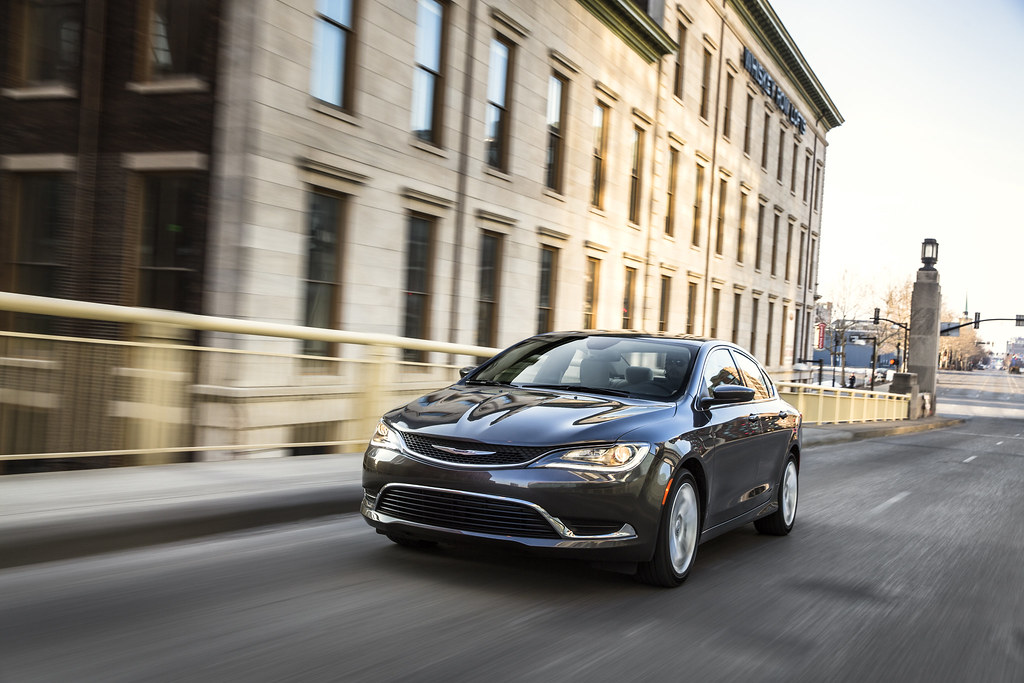
7. **Chrysler 200**The Chrysler 200, a sedan manufactured between 2011 and 2017, frequently appears on lists of cars that owners wish they had never purchased, and for good reason. Despite its attempt to offer a competitive mid-size option, this vehicle was unfortunately burdened with a multitude of reliability issues that transformed the ownership experience into a constant source of headaches and costly repairs. It really seemed to specialize in making its drivers say, ‘Oh, not again.’
Many of the most severe complaints about the Chrysler 200 centered around its transmission, particularly the 9-speed automatic found in the 2015, 2016, and 2017 models. Owners found this transmission to be ‘especially problematic,’ reporting everything from erratic shifting to complete ‘transmission failure.’ These are not minor inconveniences; they are fundamental issues that severely impact the car’s drivability and the owner’s peace of mind, often leading to unexpected and expensive trips to the mechanic.
Beyond the transmission, the Chrysler 200 also suffered from a range of other performance and comfort issues. Owners frequently cited ‘engine performance problems,’ indicating a lack of power or responsiveness that made driving less enjoyable. The ride itself was often described as ‘rough,’ with ‘too much road noise’ making cabin conversations or music less pleasant. Add to this ‘clumsy handling’ and a ‘less than reliable’ cruise control, and you have a car that struggled to deliver a smooth or dependable experience.
Even the base four-cylinder engine contributed to the feeling that the car was ‘severely outdated,’ struggling to keep up with modern expectations for power and refinement. These combined factors created a strong sense of regret among many buyers, who quickly realized that their investment in the Chrysler 200 was not paying off in terms of reliability or driving satisfaction.
Car Model Information: 2015 Chrysler 200 S
Name: Chrysler 200
Manufacturer: Chrysler
Production: 2010–2016
ModelYears: 2011–2017
Assembly: Sterling Heights, Michigan
Class: Mid-size car
Sp: us
Predecessor: Chrysler Sebring
Categories: 2010s cars, All articles with dead external links, All articles with unsourced statements, Articles with dead external links from July 2020, Articles with permanently dead external links
Summary: The Chrysler 200 is a mid-size sedan that was manufactured and marketed by Chrysler from model years 2011 to 2017 across two generations in four-door sedan and two-door convertible (first generation only) body styles.
The 200 nameplate debuted on the 200C, a prototype hybrid vehicle shown at the 2009 North American International Auto Show in Detroit and based on the Chrysler 300. The 200C concept was engineered to accept either traditional gasoline, hybrid or full-electric powertrains.
Get more information about: Chrysler 200
Buying a high-performing used car >>>
Brand: Chrysler Model: 200
Price: $7,200 Mileage: 122,275 mi.
Read more about: Is Your Ride a ‘Menace’? Unpacking the 12 Cars That Scream ‘Terrible Driver Vibes’ on the Road!
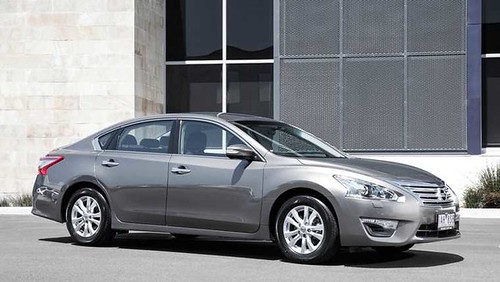
8. **Nissan Altima**Ah, the Nissan Altima. It’s a nameplate many might associate with dependable daily driving, but for a significant number of owners, especially those with models from 2013 to 2019, it’s become another poster child for buyer’s remorse. While it might look sleek, under the hood (and throughout the cabin) lurked a host of problems that left drivers wishing for a different ride.
Once again, the infamous Continuously Variable Transmission (CVT) emerges as a major culprit. For the Nissan Altima, the CVT was ‘a problematic transmission’ with its ‘worst issues raising their ugly heads in the 2013 to 2019 model years.’ This transmission is often the source of a ‘droning noise during acceleration’ that many drivers found irritating, diminishing the overall driving experience from the get-go.
But the Altima’s troubles weren’t limited to just its transmission. Owners also reported issues with the ‘steering,’ which could feel unresponsive or overly loose, making the car less engaging to drive. ‘Excessive oil consumption’ and ‘oil leaks’ added to the maintenance burden, turning routine checks into frustrating discoveries. Moreover, the vehicle was prone to ‘sensor malfunctions’ and ‘non-responsive ignitions,’ which are not only inconvenient but can also be safety concerns.
Even comfort and technology features faced criticism. The ‘infotainment system feels dated and unresponsive compared to rivals,’ making it less enjoyable to use for navigation or entertainment. Furthermore, ‘the faulty AC is another sticking point,’ which can be a huge issue depending on where you live. While the Altima might be ‘reliable overall,’ these numerous ‘quality-of-life issues make ownership less satisfying,’ leading many to regret choosing this sedan.
Car Model Information: 2020 Nissan Altima 2.5 SL
Name: Nissan Altima
Caption: 2024 Nissan Altima SR (L34; US)
Manufacturer: Nissan
Aka: Nissan Bluebird
Production: 1992–present
Class: Compact car
Predecessor: Nissan Bluebird,Nissan Stanza
ModelYears: 1993–present
Categories: 2000s cars, 2010s cars, 2020s cars, All-wheel-drive vehicles, All Wikipedia articles written in American English
Summary: The Nissan Altima is a mid-size car manufactured by Nissan since 1992. It is a continuation of the Nissan Bluebird line, which began in 1955.
The Altima has historically been larger, more powerful, and more luxurious than the Nissan Sentra but less so than the Nissan Maxima. The first through fourth-generation cars were manufactured exclusively in the United States and officially sold in North and South America, along with the Middle East and Australia. For other markets, Nissan sold a related mid-size sedan called the Nissan Teana which was between the Altima and Maxima in terms of size. In 2013, the Teana became a rebadged version of the fifth-generation Altima.
The name “Altima” was originally applied to a top trim line of the Nissan Leopard for the Japanese market in 1986, and then to the Nissan Laurel Altima mid-size car sold in Central America and the Caribbean before 1992. In 1992, Nissan discontinued the Stanza which was a Nissan Bluebird clone, replacing it with the US-built Altima, while remaining a compact car. The first Altima was produced in June 1992, as a 1993 model. All Altima models for the North American market were built in Smyrna, Tennessee, until June 2004, when Nissan’s Canton, Mississippi plant also began producing the model to meet high demand.
Get more information about: Nissan Altima
Buying a high-performing used car >>>
Brand: Nissan Model: Altima
Price: $15,990 Mileage: 93,989 mi.
Read more about: 12 Cars That Made Drivers Say ‘Nope, Not Again!’ – Your Ultimate Guide to Avoiding Instant Regret on Wheels
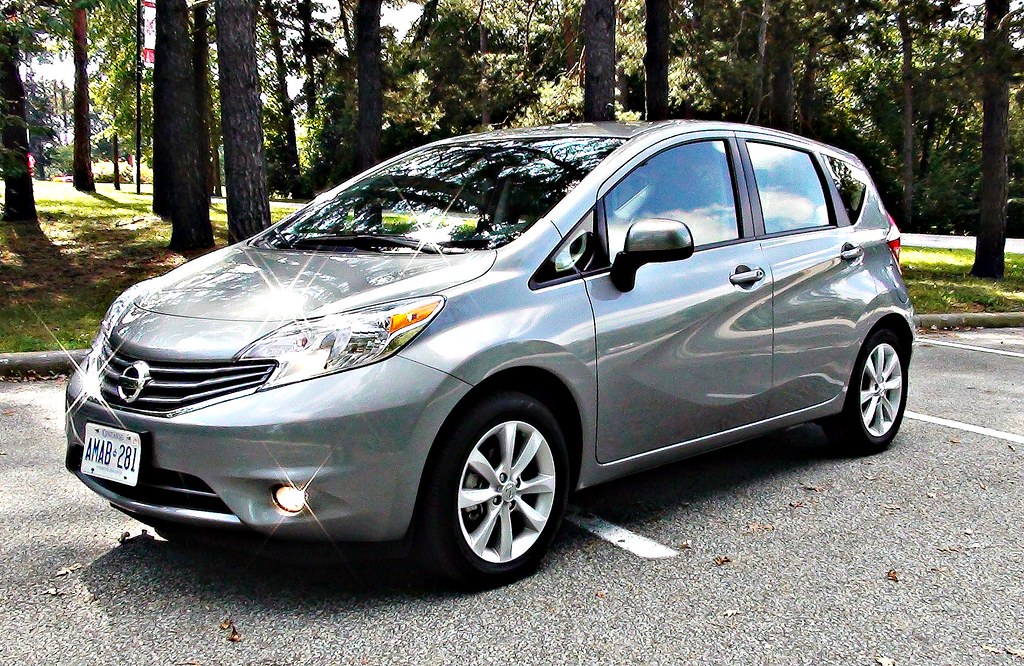
9. **Nissan Versa Note**When it comes to the Nissan Versa Note, the old adage “you get what you pay for” sadly rings true for many frustrated owners. Marketed as a ‘super-cheap small hatchback,’ its low price point often ‘mirrors the quality level,’ leading to a deep sense of disappointment. This car promised affordability but often delivered a driving experience that left much to be desired.
Once again, Nissan’s choice of a Continuously Variable Transmission (CVT) became a central point of contention. The ‘transmission — a CVT — frustrated Nissan Versa Note owners to no end,’ with many reporting issues that detracted from smooth operation and reliability. It’s a recurring theme for Nissan vehicles of this era, and the Versa Note was no exception to this transmission headache.
Beyond the transmission, drivers quickly discovered that the Versa Note’s ‘anemic acceleration from the 1.6-liter 4-cylinder engine’ made it feel sluggish and underpowered, particularly in situations requiring quick bursts of speed. Merging onto highways or overtaking became a test of patience, which isn’t ideal for daily commutes. This lack of responsiveness further cemented the feeling that the car was struggling to keep up.
Comfort and refinement were also significant issues. Owners lamented that the car was ‘too small,’ making it feel cramped, especially on longer journeys. The ‘uncomfortable seats’ and ‘horrible road noise’ only amplified this discomfort, turning simple drives into grating experiences. While the ‘price is reasonable,’ many concluded that ‘after assessing the issues it feels as though it’s a bit too high’ for the level of frustration it brings.
Car Model Information: 2023 Honda Civic Sport
Categories: All set index articles, Articles with short description, CS1 Mexican Spanish-language sources (es-mx), CS1 Portuguese-language sources (pt), CS1 Spanish-language sources (es)
Summary: Nissan Versa is an automobile nameplate used by the Japanese manufacturer Nissan in the Americas for the following models:
According to a Nissan press release in 2008, “versa” is short for “versatile space” meant to imply the spaciousness of the interior and configurable cargo arrangements. The Versa is one of the few remaining subcompact cars left on sale in the North American market, with most automakers dropping small cars from their lineups to focus on crossovers and SUVs.
Get more information about: Nissan Versa
Buying a high-performing used car >>>
Brand: Nissan Model: Versa Note
Price: $27,589 Mileage: 27,524 mi.
Read more about: Is Your Ride a ‘Menace’? Unpacking the 12 Cars That Scream ‘Terrible Driver Vibes’ on the Road!
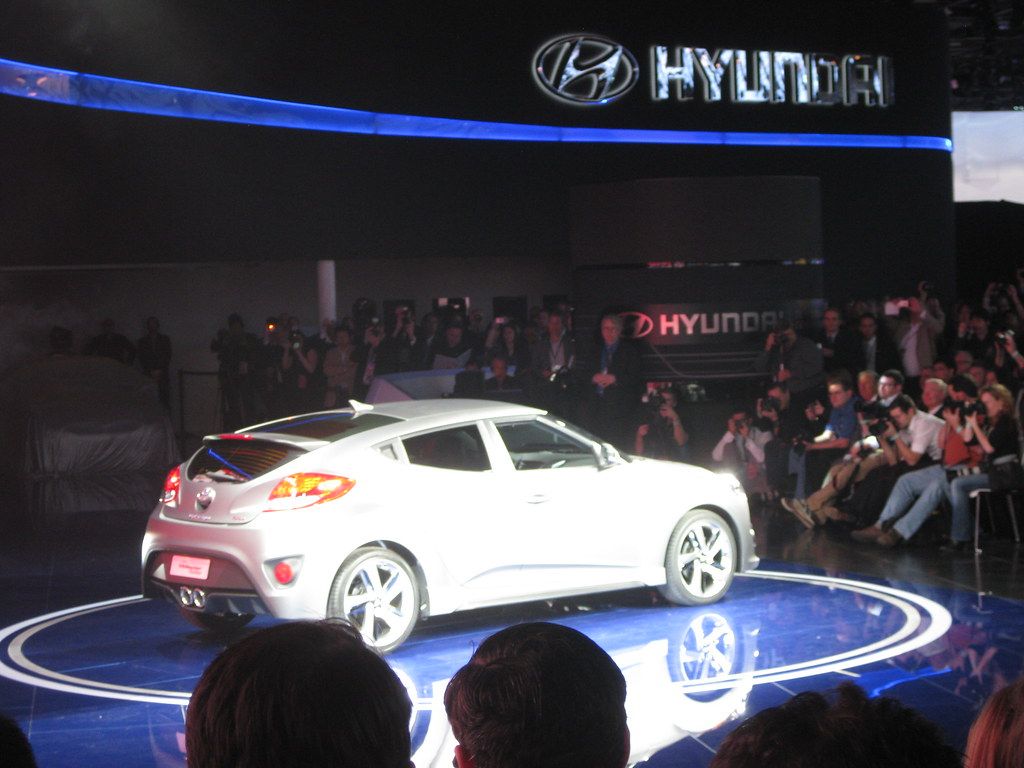
10. **Hyundai Veloster**The Hyundai Veloster certainly stands out with its ‘cool-looking car with distinctive styling’ and unique three-door configuration, promising a sporty and engaging ride. It even boasts ‘responsive handling’ that might initially draw buyers in. However, underneath that attractive exterior lies a collection of problems that many owners found ‘hard to ignore,’ ultimately leading to buyer’s remorse.
One of the most concerning issues for Veloster owners revolved around its engine, with reports of ‘engine issues’ that could unfortunately ‘lead to catastrophic failure.’ This kind of severe mechanical flaw can turn an exciting new car into a major financial burden and a source of constant worry, completely undermining the appeal of its design and handling.
The dual-clutch transmission in the Veloster also proved to be a significant pain point. Owners experienced a range of problems, including ‘delayed acceleration,’ ‘slipping,’ and ‘jerky shifts,’ which not only made for an unpleasant driving experience but also raised questions about the transmission’s long-term reliability. These issues directly impacted the car’s responsiveness and overall driving pleasure, making it feel less sporty than intended.
As if those weren’t enough, the Hyundai Veloster also had its share of ‘suspension and steering problems,’ further detracting from the promised driving dynamics. Adding to the daily frustrations, some owners found ‘getting in and out of the car is kind of tough,’ and despite its sporty image, its ‘sluggish acceleration isn’t something that stands out as a selling point.’ Consequently, ‘despite the idea that it’s sporty, not a lot of people would buy this car again,’ making it a regrettable choice for many.
Car Model Information: 2019 Hyundai Veloster Base
Name: Hyundai Veloster
Manufacturer: Hyundai Motor Company
Production: 2011–2022
Class: Sport compact car
Layout: Front-engine, front-wheel-drive layout
BodyStyle: hatchback
Predecessor: Hyundai Tiburon
ModelYears: 2012–2022
Assembly: Ulsan
Categories: All Wikipedia articles in need of updating, All articles with unsourced statements, Articles containing Korean-language text, Articles with short description, Articles with unsourced statements from May 2018
Summary: The Hyundai Veloster (Korean: 현대 벨로스터, romanized: Hyeondae Belloseuteo) is a compact car first produced in 2011 by Hyundai, with sales beginning in South Korea on March 10, 2011, and in Canada and the United States since the fall of 2011. In South Korea, it was marketed under Hyundai’s ‘Premium Youth Lab’. It was unveiled on January 10, 2011, at the Detroit Auto Show, and fills the void left when Hyundai discontinued the Hyundai Tiburon after the 2008 model year.
The car differs from most other hatchbacks with its asymmetrical door configuration, featuring one large door on the driver side and two smaller doors on the passenger side. This configuration is more common on commercial vehicles and minivans.
Get more information about: Hyundai Veloster
Buying a high-performing used car >>>
Brand: Hyundai Model: Veloster
Price: $13,825 Mileage: 81,234 mi.
Read more about: 12 Cars That Made Drivers Say ‘Nope, Not Again!’ – Your Ultimate Guide to Avoiding Instant Regret on Wheels
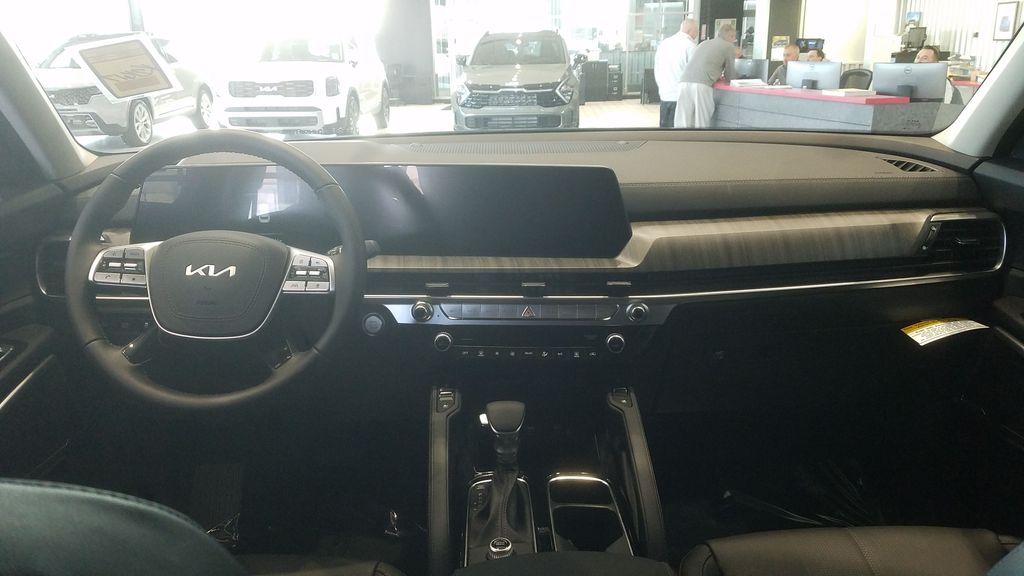
11. **Kia Rio**The Kia Rio is often celebrated for its ‘affordability and efficiency,’ making it an attractive option for budget-conscious buyers seeking practical transportation. However, a significant number of owners have found themselves with ‘their fair share of buyer’s remorse,’ realizing that the vehicle ‘doesn’t live up to the standards it sets’ in other crucial areas. It’s a classic case of getting what you pay for, but not quite in the way you hoped.
A primary source of discontent for Kia Rio owners stems from its ‘engine issues.’ These problems frequently manifest as ‘rough idling and misfires,’ which are often attributed to common components like ‘spark plugs or ignition coils.’ While seemingly minor, these issues can lead to persistent performance problems, making the car feel less reliable and more prone to unexpected maintenance needs, undermining its initial appeal as an economical choice.
Beyond the engine, owners also frequently ‘complain about the cheap interior quality and comfort issues.’ This includes ‘limited cargo room and backseat,’ which are ‘big issues for some folks’ who expect a functional and reasonably comfortable small car. The overall feel of the interior materials and the lack of passenger space often fell short of expectations, particularly when compared to competitors.
This accumulation of frustrations deeply impacted owner satisfaction. It’s telling that ‘less than fifty percent of people who bought one stated that they would buy it again,’ a stark indicator of the widespread regret. Despite its initial draw as a cost-effective option, the Kia Rio’s reliability, comfort, and practical shortcomings ultimately led many to wish they had opted for a different vehicle.
Car Model Information: 2023 Kia Rio S
Name: Kia Rio
Caption: Fourth generation Kia Rio
Manufacturer: Kia
Aka: Kia Pride (2005–2017),Kia K2 (China; 2011–2020)
Production: November 1999 – December 2023
ModelYears: 2001–2023 (North America)
BodyStyle: hatchback
Class: Subcompact car
Layout: Front-engine, front-wheel-drive layout
Predecessor: Kia Pride,Kia Avella
Successor: Kia K3 (BL7)
Categories: 2000s cars, 2010s cars, Articles containing Korean-language text, Articles with short description, CS1 Croatian-language sources (hr)
Summary: The Kia Rio (Korean: 기아 리오) is a subcompact car manufactured by Kia from 1999 to 2023. Body styles have included a three and five-door hatchback and four-door sedan, equipped with inline-four gasoline and diesel engines, and front-wheel drive.
The Rio replaced the first generation Pride—a rebadged version of the Ford Festiva—and the Avella, a subcompact sold as a Ford in some markets. A second generation was introduced in 2005 in Europe and in 2006 in North America, sharing its platform with the Hyundai Accent, a subcompact manufactured by its sister Hyundai Motor Company in South Korea.
In August 2023, the K3 was introduced as its successor in several markets such as Mexico and the GCC countries.
Get more information about: Kia Rio
Buying a high-performing used car >>>
Brand: Kia Model: Rio
Price: $17,218 Mileage: 22,509 mi.
Read more about: 12 Cars That Made Drivers Say ‘Nope, Not Again!’ – Your Ultimate Guide to Avoiding Instant Regret on Wheels
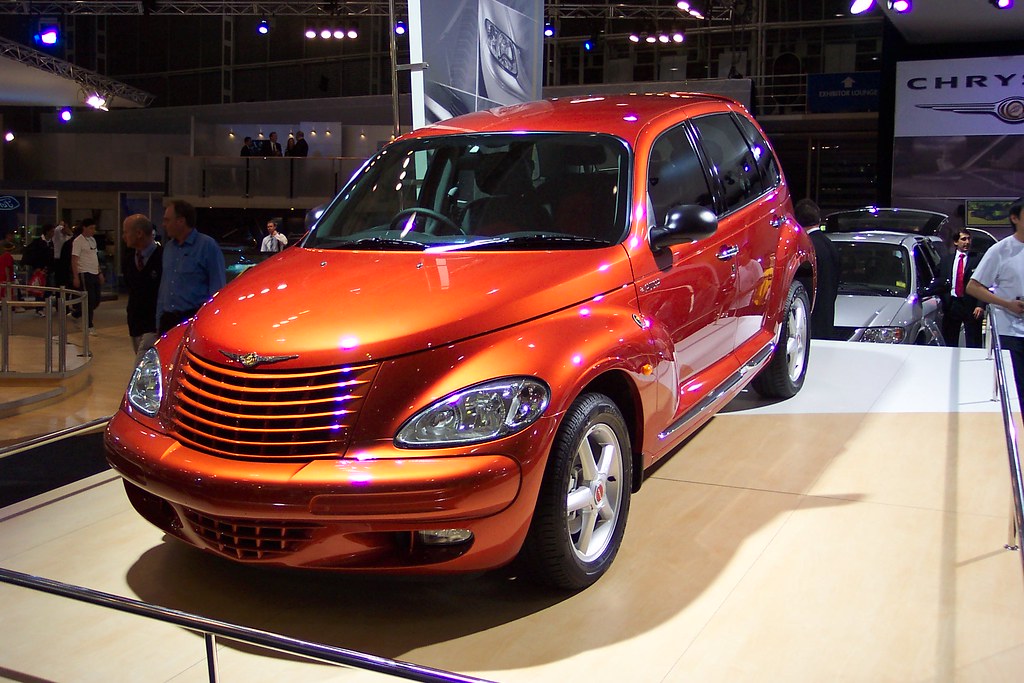
12. **Chrysler PT Cruiser**Ah, the Chrysler PT Cruiser. This compact car certainly left an impression, primarily for its ‘retro style that people love or hate — or is that love to hate?’ While its distinctive looks garnered strong opinions, for many owners, the ‘looks aren’t the only things wrong with the vehicle.’ Beneath the unique exterior lay a deep well of mechanical and electrical problems that made ownership a truly regrettable experience.
One of the most persistent and frustrating issues plaguing the PT Cruiser involved its engine. Owners reported ‘engine issues galore, ranging from stalling to rough idling, overheating, and head gasket failure.’ These are serious, fundamental problems that not only require expensive repairs but also significantly compromise the vehicle’s reliability and safety. Imagine the stress of constantly worrying if your car will leave you stranded.
But the PT Cruiser’s troubles didn’t stop at the engine. It also suffered from widespread ‘transmission and electrical problems,’ adding to the litany of reliability concerns. Electrical glitches can lead to a host of unpredictable malfunctions, from minor annoyances to critical system failures, making the car feel temperamental and unreliable in daily use.
These chronic issues, among ‘other things,’ collectively ‘leave owners regretting their buying decision.’ The ongoing maintenance, coupled with the sheer unreliability of key components, transformed what might have been an appealingly quirky car into a financial drain and a source of constant frustration. For many, the unique style simply wasn’t enough to outweigh the never-ending stream of mechanical woes.
So, there you have it – a dozen vehicles that, for various reasons, have left their owners yearning for a do-over. It’s a tough lesson learned, often after sinking hard-earned money and time into what should have been a dependable ride. From problematic transmissions to engine failures, and from uncomfortable interiors to glaring safety recalls, these cars stand as cautionary tales in the sometimes-perilous journey of car ownership.
Car Model Information: 2023 Honda Civic Sport
Name: Chrysler PT Cruiser
Manufacturer: Chrysler
ModelCode: PT,PG
Production: 2000–2010
ModelYears: 2001–2010
Assembly: Toluca, Mexico State
Designer: Bryan Nesbitt
Class: Compact car
BodyStyle: convertible
Platform: Chrysler PT platform
Related: Dodge SRT4,Dodge Neon
Predecessor: Dodge Neon
Successor: Lancia Delta#Third generation
Layout: Front-engine, front-wheel-drive layout
Engine: ubl
Transmission: Ultradrive#40TE
Wheelbase: 103 in
Abbr: on
Length: 168.8 in
Width: 67.1 in
Height: 63 in
Weight: 3123 lb
Categories: 2010s cars, All articles with unsourced statements, Articles with short description, Articles with unsourced statements from March 2018, Cars discontinued in 2010
Summary: The Chrysler PT Cruiser is a compact car that was built by the American company Chrysler from 2001 until 2010. Introduced as a five-door hatchback wagon, a two-door convertible variant was also made from 2005 until 2008.
Originally planned as a Plymouth model, the PT Cruiser was ultimately marketed as a Chrysler when Plymouth was discontinued. Intended to invoke 1930s aesthetics, the exterior of the PT Cruiser was designed by Bryan Nesbitt. The model received an intermediate facelift for the 2006 model year. Interior packaging was noted for its high roof, high h-point seating, and flexible cargo and passenger configurations enabled by a multi-level rear cargo shelf and rear seats a user could fold, tumble, or remove.
The PT Cruiser was produced in Mexico and Austria at the Toluca Car Assembly and Eurostar Automobilwerk factories respectively. By the end of production in July 2010, worldwide production had reached 1.35 million.
In its nameplate, PT stands for “Personal Transport” or “Personal Transportation”. PT was the PT Cruiser’s product code for the Mexican-made units.
Get more information about: Chrysler PT Cruiser
Buying a high-performing used car >>>
Brand: Chrysler Model: PT Cruiser
Price: $27,589 Mileage: 27,524 mi.
Read more about: 12 Cars That Made Drivers Say ‘Nope, Not Again!’ – Your Ultimate Guide to Avoiding Instant Regret on Wheels
This isn’t just about pointing fingers; it’s about empowering you, the potential car buyer, with insights from the real-world experiences of others. In a market where every dollar counts and reliability is paramount, knowing which vehicles have consistently disappointed can be your greatest asset. After all, the best way to avoid buyer’s remorse is to make an informed decision from the start. So, next time you’re eyeing a new set of wheels, remember these stories, do your homework, and choose wisely. Your future self (and your wallet) will thank you for it.



